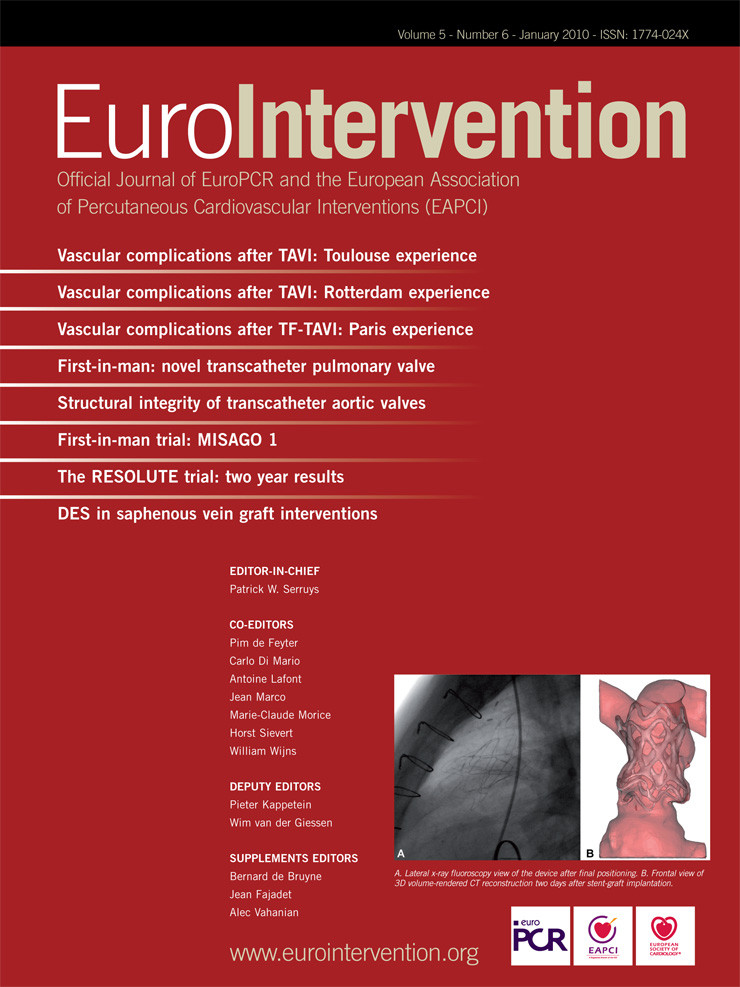Dear Editor,
With great interest, we read the recently published article entitled: «Percutaneous coronary intervention for bifurcation lesions: 2008 consensus document from the fourth meeting of the European Bifurcation Club.»1 This club is the most internationally recognised interventional club in the field of bifurcation intervention. However, they have a bias toward the exclusive use of the Medina classification; even with the marked limitation of this classification, which is admitted indirectly in the article itself.
For example, the importance of a bifurcation angle on outcome is recognised in this paper, despite the fact that the Medina classification does not mention bifurcation angles as opposed to the Movahed classification where they are an important part of the classification.2-5 The Movahed classification uses a third suffix to describe the angulation of bifurcation branches that can be combined with other suffixes, or can be used alone. The suffix «V» is for angles less than 70 degrees and the suffix «T» is for angles more than 70 degrees. A fourth optional suffix can be added to expand the bifurcation lesion description, if necessary, such as left main involvement, lesion length, calcification, etc. Furthermore, the Medina classification divides true bifurcation lesions into three unnecessary and clinically irrelevant subgroups (1.1.1, 1.0.1, 0.1.1). The Movahed classification, instead, summarises true bifurcation lesions into one group, the so-called B2 lesions (B, for bifurcation; 2,
for both side and main branch ostia having significant disease).4 Therefore, based upon these comparisons, we believe the European Bifurcation Club should consider the Movahed classification as the preferred coronary bifurcation classification.
We appreciate Dr. Movahed’s interest in our Consensus document1. The importance of atherosclerotic plaque distribution in bifurcation lesions is underlined by the existence of a number of attempts to categorise these lesions, including the Duke, the Sanborn, the Safian, the ICPS, the Syntax, the Movahed and the Medina classifications2,3. Among these, the Medina classification is considered the simplest one, and has been recognised in a consensus document of the first meeting of the European Bifurcation Club as the gold standard for bifurcation lesion evaluation4. Although all classifications describe the distribution of plaque in the three limbs of a bifurcation in a similar way, and are thus easily comparable, the reason for our choice to accept the Medina classification5 is that it is intuitive and straightforward and does not need to be memorised, even though it provides all the information contained in the others (also, the Medina classification has already 64 citations in the last three years according to the Scopus database).6 Although Dr. Movahed states that his classification compared to Medina is «clinically oriented», evidence from well conducted clinical trials is still missing.
We are aware that the Medina classification, as all others, has inherent limitations and does not describe a number of anatomical features that may influence and affect treatment strategy (such as information on the lesion length, especially for the side branch, or the angle between two branches). However, adding other suffixes for continuous variables, like lesion length or angle, may require dedicated QCA measurements. We believe, therefore, that inclusion of other variables in Medina bifurcation classification would increase the complexity of that classification and convert the simplicity of «three digits» into another complex mnemonic (seen in some other classifications) and limit its widespread clinical acceptance.

